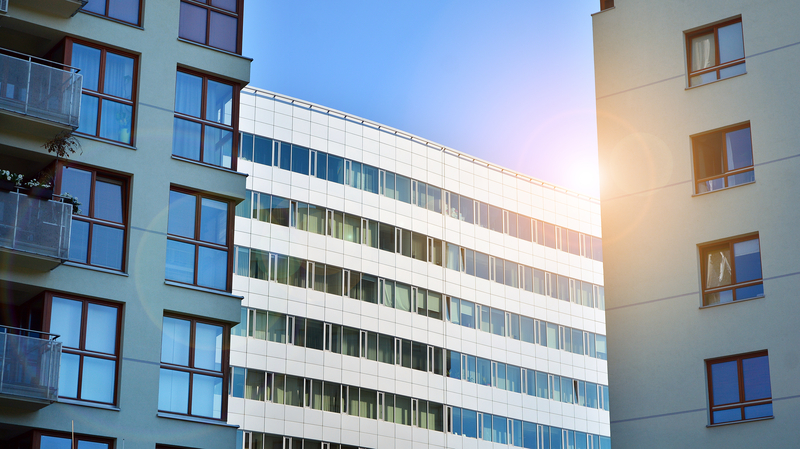What is a Curtain Wall System?
A glance on the façade of a building means getting your attention captured. But it's not in all buildings. Normally the exterior is a symphony that defines the character and atmosphere of the structure. And so with the wheels of modern architecture spinning curtain wall systems are coming in hot when it pertains enhancing both the aesthetics and structural strength of a building. It acts as a shield against nature's forces while also creating a design.

Curtain Wall System
A curtain wall system essentially serves as a covering for buildings without contributing to its support. It is typically made from materials such as aluminum and glass. These systems ingeniously redistribute gravity and wind forces relieving the structure from bearing those loads. The materials used in curtain walls are not visually attractive but waterproof and airtight ensuring long lasting durability.
There are two types of curtain wall systems; stick systems. Unitized systems can be further categorized into three types each designed to meet requirements.
Water Managed Systems; These systems include moisture drains that act as barriers against water intrusion. They play a role in maintaining interiors.
In this situation the materials between the frame and frame units are tightly sealed to provide a barrier against elements, such as wind or rain.
Pressure equalized systems guarantee that the building remains tightly sealed against forces, like wind effectively preventing any visitors from gaining access.
Curtain Wall Systems: Types Unveiled
1. Stick Systems: Imagine a seamless dance of glass panels adorning a building's exterior, offering both structural support and aesthetic allure. Stick systems are the sophisticated choice that enhances security while augmenting the building's visual appeal. Commercially, they prove to be a wise investment, boasting reduced repair costs and low maintenance expenditures.
2. Unitized or Modular Systems: This type takes a different approach, glazing and arranging key components into a single unit at the factory. The advantage? Reduced labor costs and faster construction. However, one must bear in mind the hefty shipping costs associated with delivering these sizable curtain wall units to the construction site.
A Glimpse into History
The fascinating history of curtain wall systems is matched by their contemporary applications. In the past commercial buildings heavily relied on walls to bear the load opting for sturdy materials, like reinforced concrete and steel. However as construction practices advanced, the necessity for these walls to carry the weight diminished.
Surprisingly glass emerged as a choice that gained prominence leading to the range of curtain wall options available today. In the century curtain walls in the Ottoman Empire incorporated components to hold plate glass together. Earlier versions even experimented with fiberglass compounds and steel mullions lined with asbestos. Over time these outdated materials were replaced by silicone sealants and glass. Materials such as aluminum made their entrance later when Western economies embraced industrialization.
The Evolution of Energy Efficiency
Energy preservation has become the mantra in the ever dynamic field of architecture and construction. Curtain wall systems, which initially used to only serve as weather covers and exhibit elegant appearance, are now taking up a new place: energy conservatism.
Contemporary curtain walls are constructed with concern for energy efficiency. Some glazing technologies applied during fabrication enable interior temperatures not to be considerably altered by foreign temperature conditions outside, hence less dependence on heating or cooling appliances. Among other innovations include low-emissivity coatings, insulated glass units, thermally broken frames among others that have been invented to enhance energy performance.
Other than being a showcase of architectural expertise, curtain wall systems bring about significant energy savings in any building.
Conclusion
In modern contemporary commercial buildings, curtain wall systems epitomize architectural designs. They offer aesthetics, protection as well as cost-effectiveness and thus best for business structures and offices among others.
If you are planning to adopt or incorporate the idea of curtain wall systems into your respective business structure or any other kind of office structure, then Weiye Aluminium is here for you. We specialize in making the best curtain walls that will give life to your unique architectural dreams with utmost precision and excellence.
In the architecture globe, curtain wall systems are more than walls; they act as proof of man's genius in that they safeguard our spaces while at the same time giving a beautiful illustration for all to see. Join the revolution; invest in curtain wall systems and redefine tomorrow today by enhancing your building façade.



